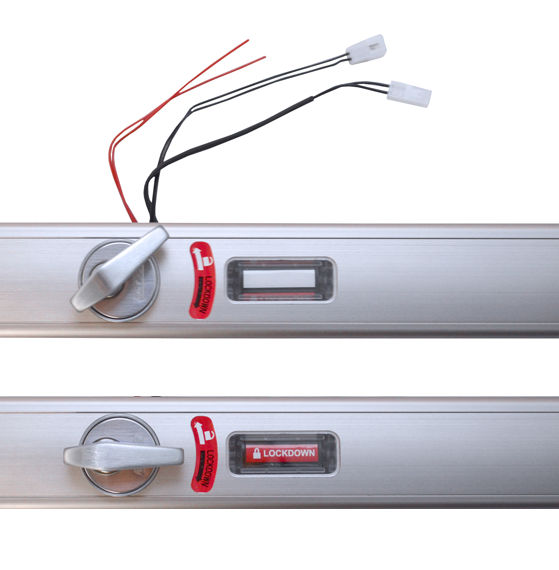 When an active-shooter incident occurs in an educational occupancy, it is absolutely crucial that classroom doors are able to be locked to prevent access from the corridor to the classroom. Years ago, these doors often had traditional classroom locks, which required the door to be opened in order to insert a key in the outside lever to lock it. Today, these doors commonly have locksets that do not require the door to be opened to secure them, and NFPA 101 – Life Safety Code specifically states that the locking means used on a classroom door “shall be capable of being engaged without opening the door.”
When an active-shooter incident occurs in an educational occupancy, it is absolutely crucial that classroom doors are able to be locked to prevent access from the corridor to the classroom. Years ago, these doors often had traditional classroom locks, which required the door to be opened in order to insert a key in the outside lever to lock it. Today, these doors commonly have locksets that do not require the door to be opened to secure them, and NFPA 101 – Life Safety Code specifically states that the locking means used on a classroom door “shall be capable of being engaged without opening the door.”
There are several lock functions that can meet the NFPA 101 requirement, but larger classrooms may have panic hardware, particularly in a higher-education setting. Panic hardware is required for classrooms with an occupant load of 50 people or more for jurisdictions enforcing the International Building Code (IBC) and/or International Fire Code (IFC). For buildings that have to comply with the Life Safety Code, panic hardware is required for classroom doors when the occupant load is 100 people or more. Note: The panic hardware requirements apply to doors equipped with a lock or latch.
Most college lecture halls have doors that are equipped with panic hardware, and many higher-ed facilities also incorporate access control. Although an access control system can remotely lock doors once notified of an active shooter event in progress, local lockdown of a door with panic hardware and access control can be a challenge. Precious time can be lost trying to barricade a lecture hall door with furniture, and past shootings in colleges and universities have shown that barricading the doors is not the most effective security method.
Several colleges and universities approached Allegion to find a solution for individual lockdown of doors with panic hardware and access control. The Von Duprin Emergency Secure Lockdown (ESL) allows doors that are equipped with Von Duprin QEL (Quiet Electric Latch Retraction) devices to incorporate local lockdown. Either a thumbturn cylinder or a key cylinder can be used to lock the doors from the inside, in compliance with the NFPA 101 requirement. The ESL will interrupt the QEL motor, allowing the latch to automatically project and lock the door on the outside, but will not impede egress in any way. An indicator on the panic hardware will clearly show the locked down status of the door. Initiating the local lockdown will notify the access control system so security personnel can investigate; this will also help to deter unauthorized use of the ESL.
The ESL kit is available for Von Duprin 98/99, 98-F/99-F, 33A/35A, and 33A-F/35A-F devices with the QEL option, and it is available to order now. Here’s a quick video of how it works:
For more information, visit:
Any questions?
You need to login or register to bookmark/favorite this content.





That is neat
We tried a sample classroom at our university. The room already had two pairs of doors that were controlled by a stand alone time controlled system with VD99-EL devices. We added a big red “lockdown” push button at the front of the room that interrupted the circuit and the doors all locked. Push in to lock, turn and it pops out to restore. This can be done with any access system, QEL or older EL devices and is simple and inexpensive. Exit and key override are not affected.
This is a great solution for electrified doors, but unfortunately, most schools can’t afford to electrify all of their panic hardware, especially for oversized classrooms, auditoriums, gymnasiums, and/or the cafeteria, so this is a great, easy for the End User, mechanical alternative. For the electrical part, if it’s a renovation of an already electrified panic device, then omitting the wiring required for the button on the wall can save a lot of time and money for installation. For new construction, the idea of a remote panic button is a viable good option, especially for elementary and higher ed (not sure if I trust middle and high schoolers to not cause mischief).